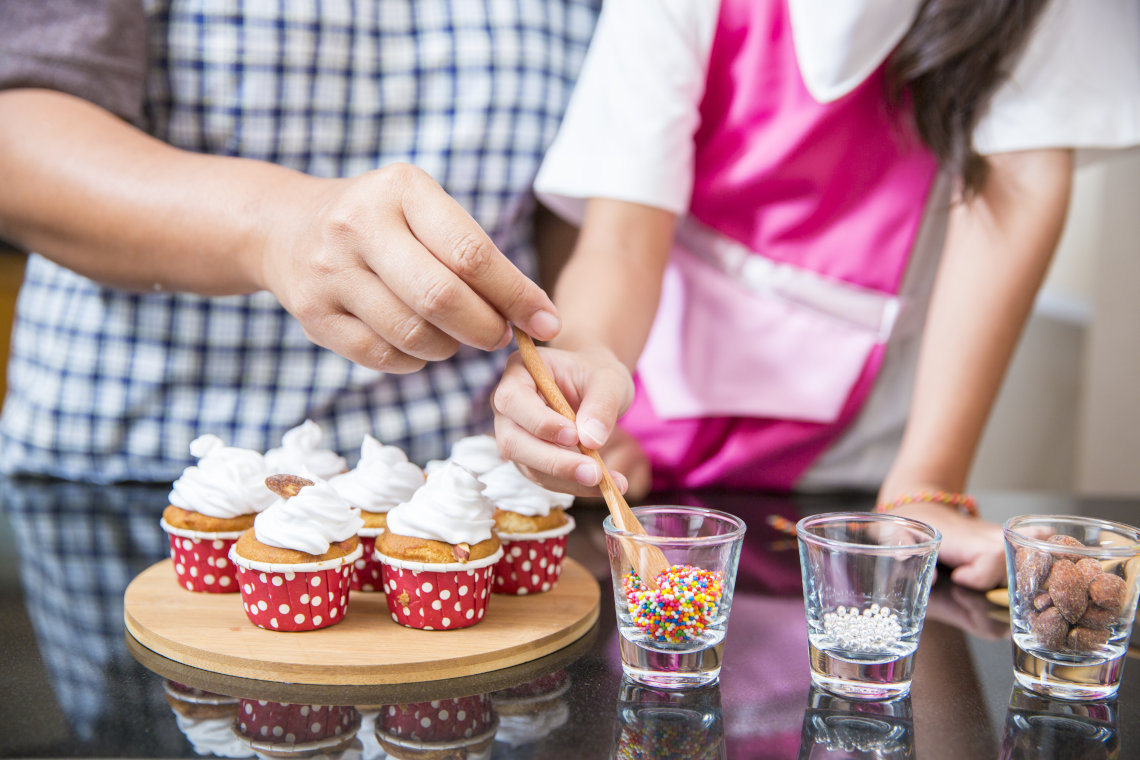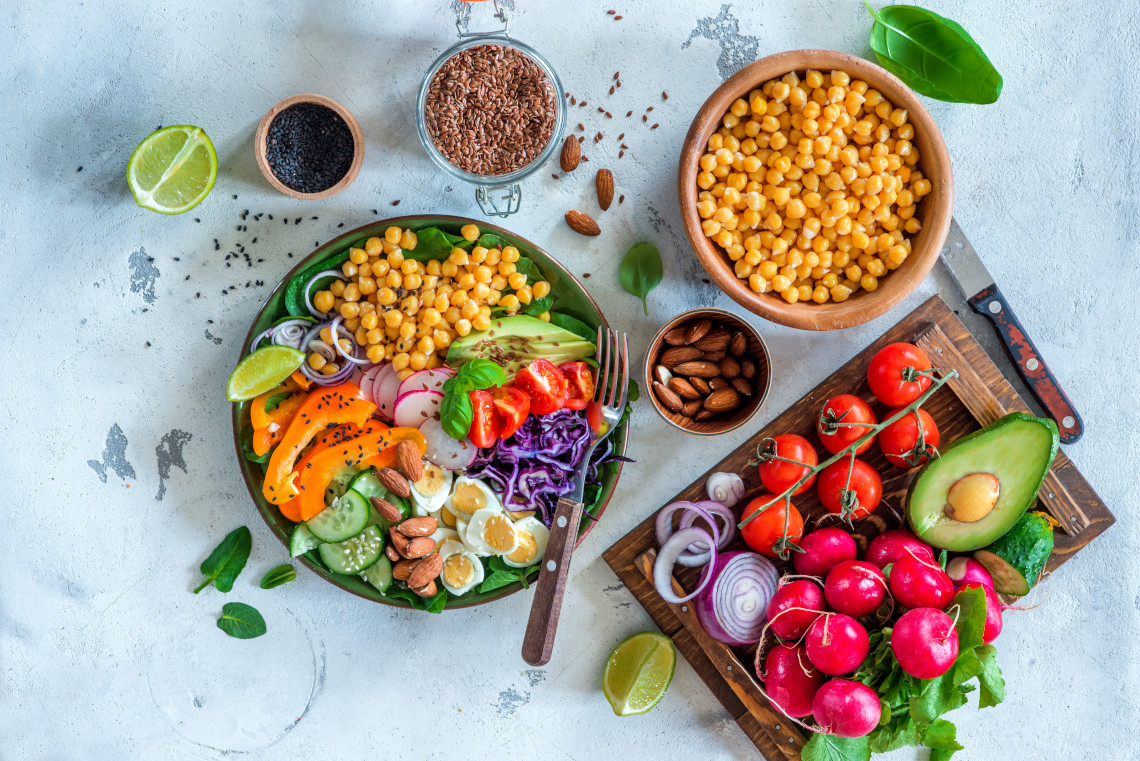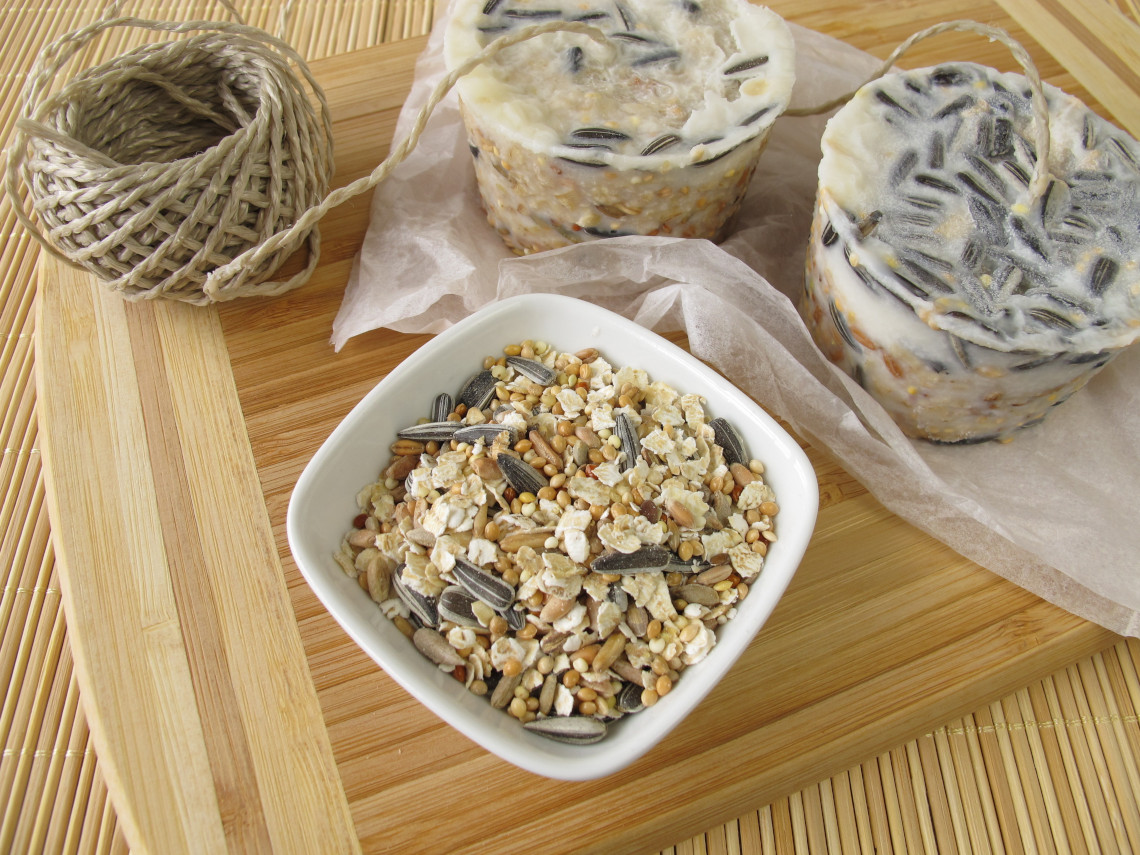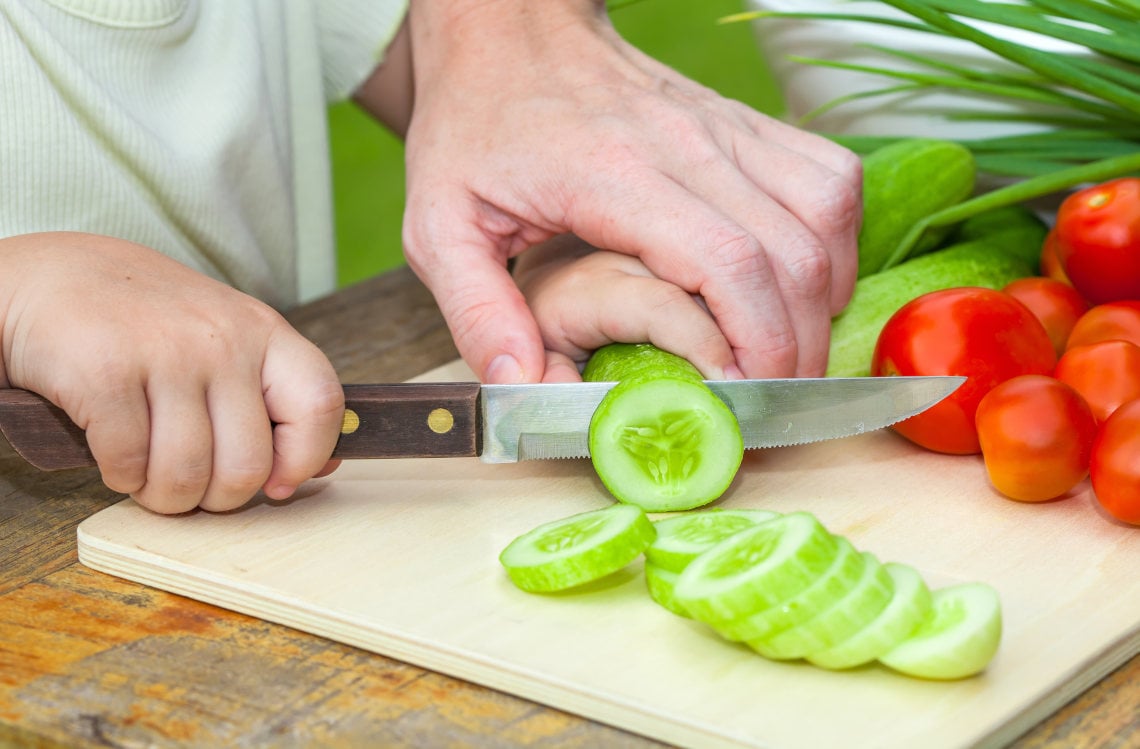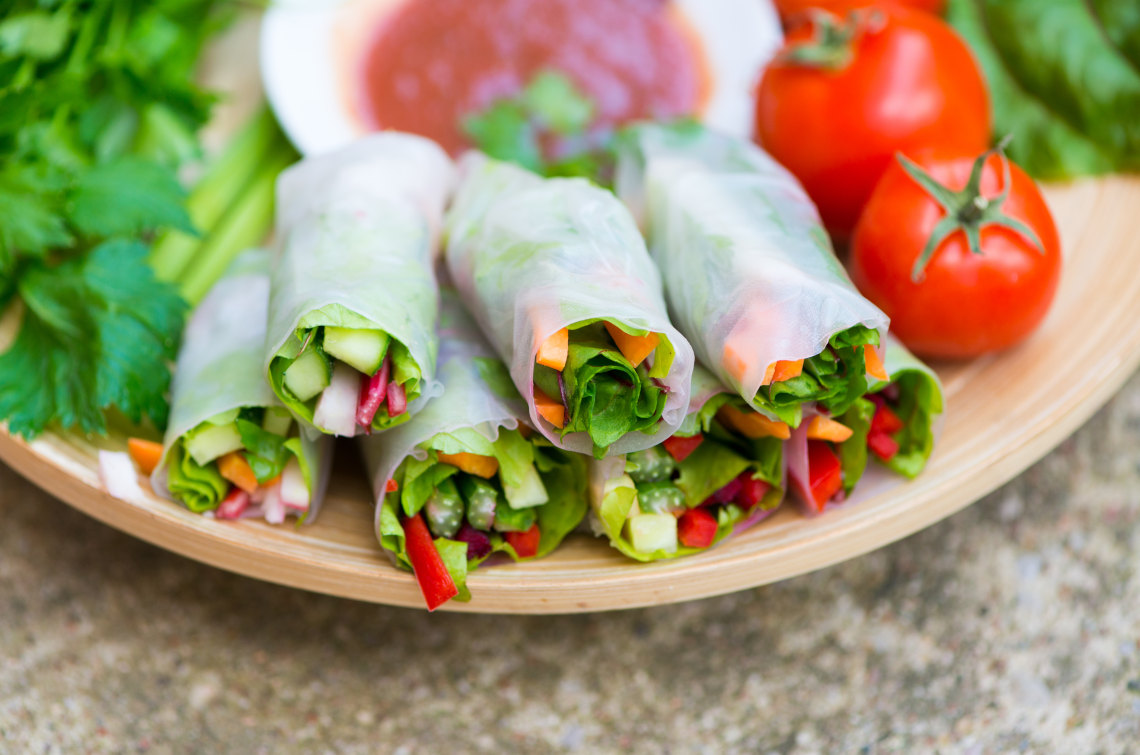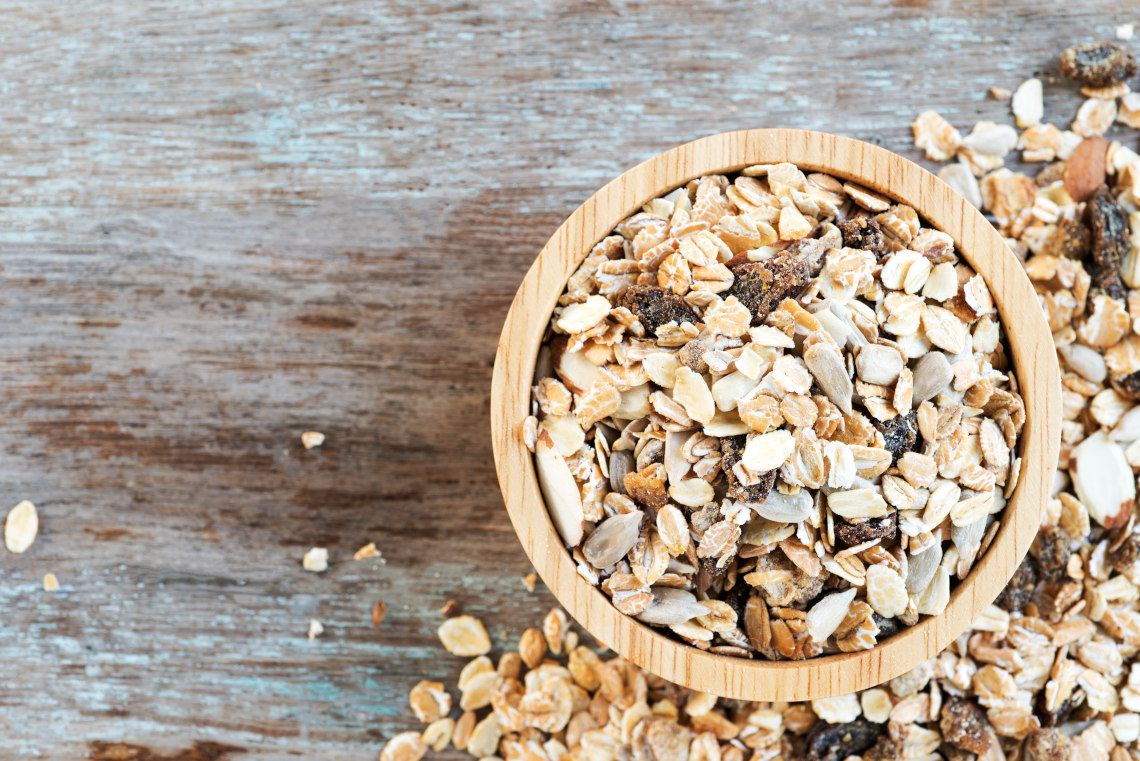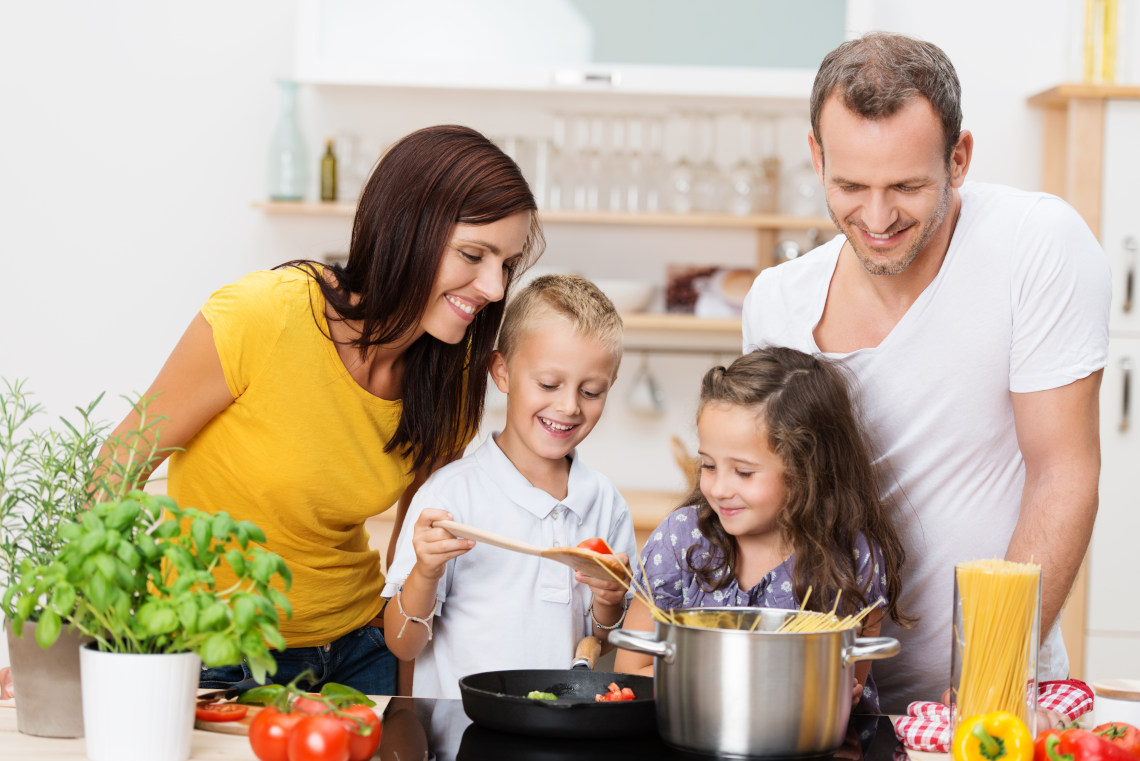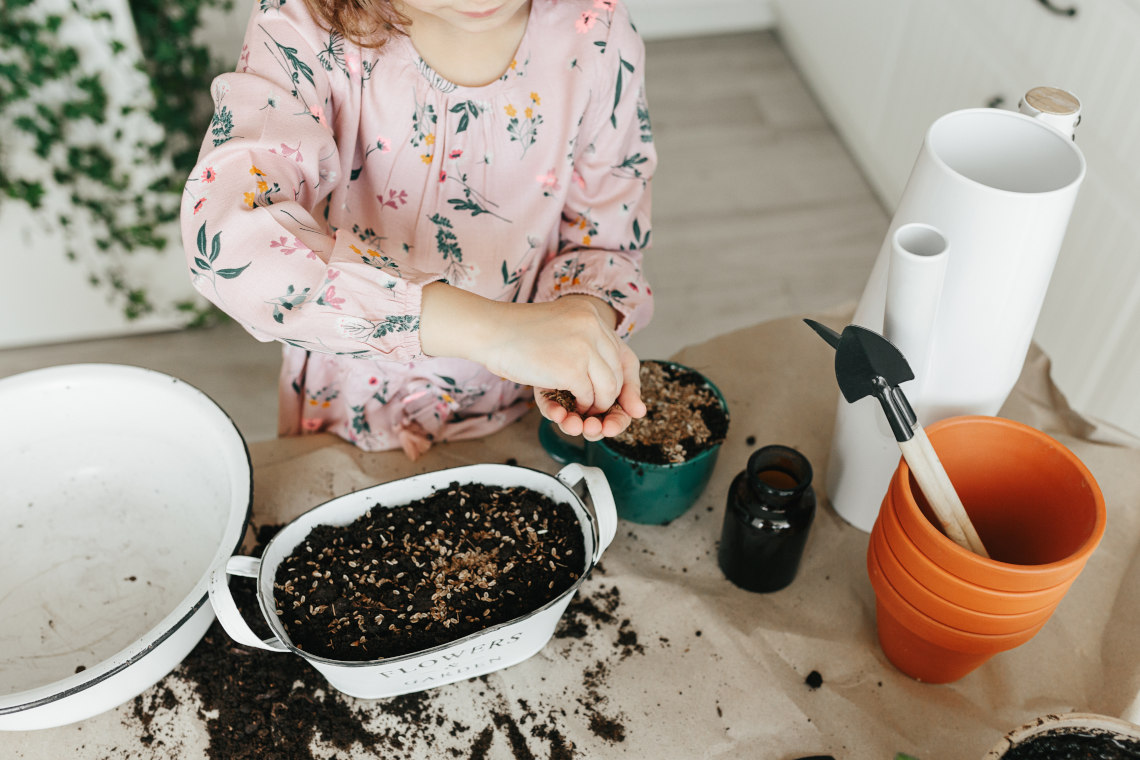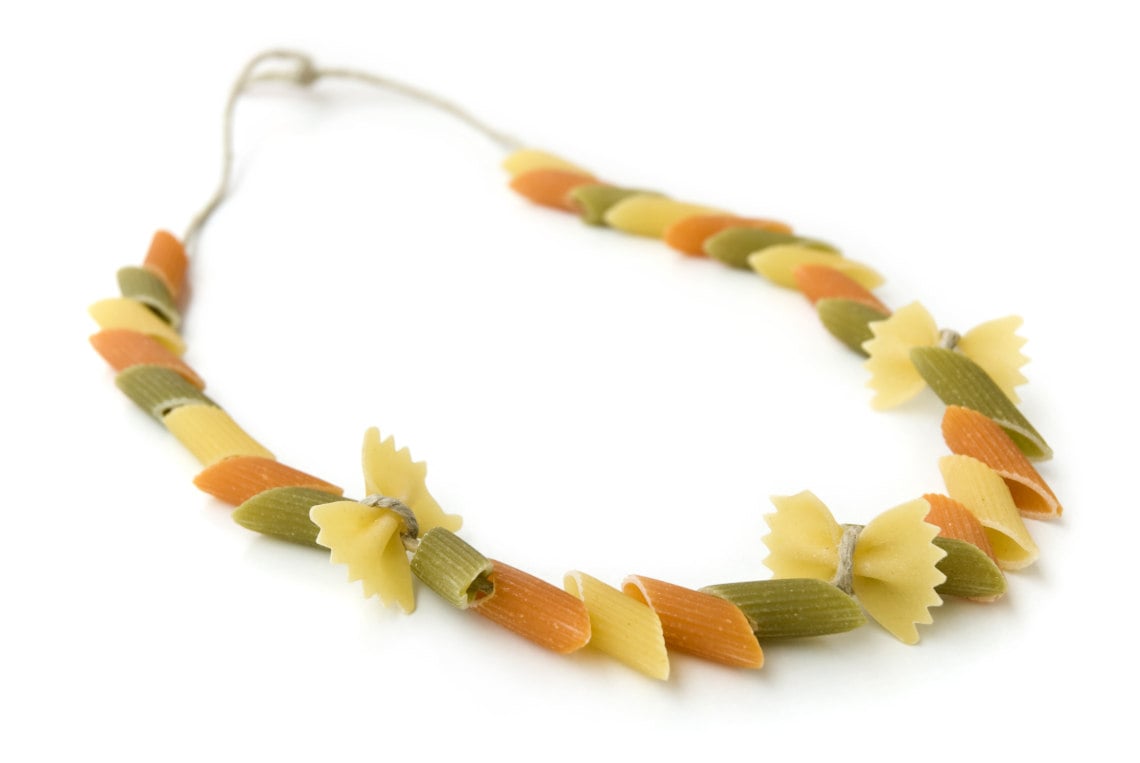The so-called nutrition rainbow is made up of red pigments (lycopene for heart, brain and bone growth), orange pigments (beta-carotene to support eye and hair health, and for its valuable anti-inflammatory properties), green pigments (folate, for healthy cell development), and blue pigments (anthocyanins, for reducing free radicals and boosting the brain).
‘Eating the rainbow’ is therefore an easy and fun way of making sure kids get their full daily intake of vitamins, minerals, antioxidants and phytochemicals. The simplest way to do this is with creative presentations of various fruits and vegetables, or what we like to call the rainbow salad. Bright, vibrant, and fun both to prepare and serve, it’s a great way to encourage children to enjoy their veggies.
Once you’ve chopped and prepared the ingredients (you can let them carve up any softer ones with plastic knives), let them arrange their own salads into any sort of shapes or patterns they like - you’ll find children are much more inclined to eat healthy foods that are presented in a way they find visually appealing


